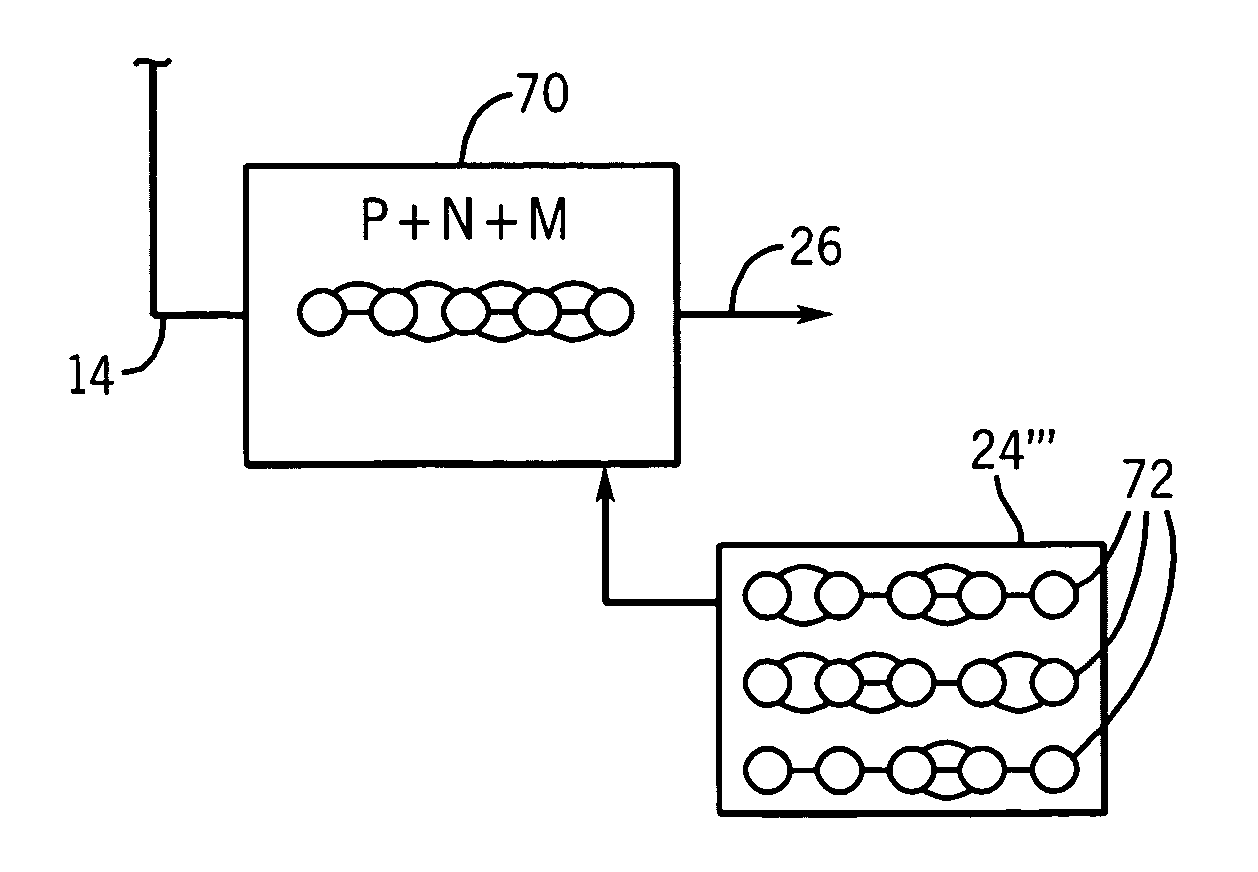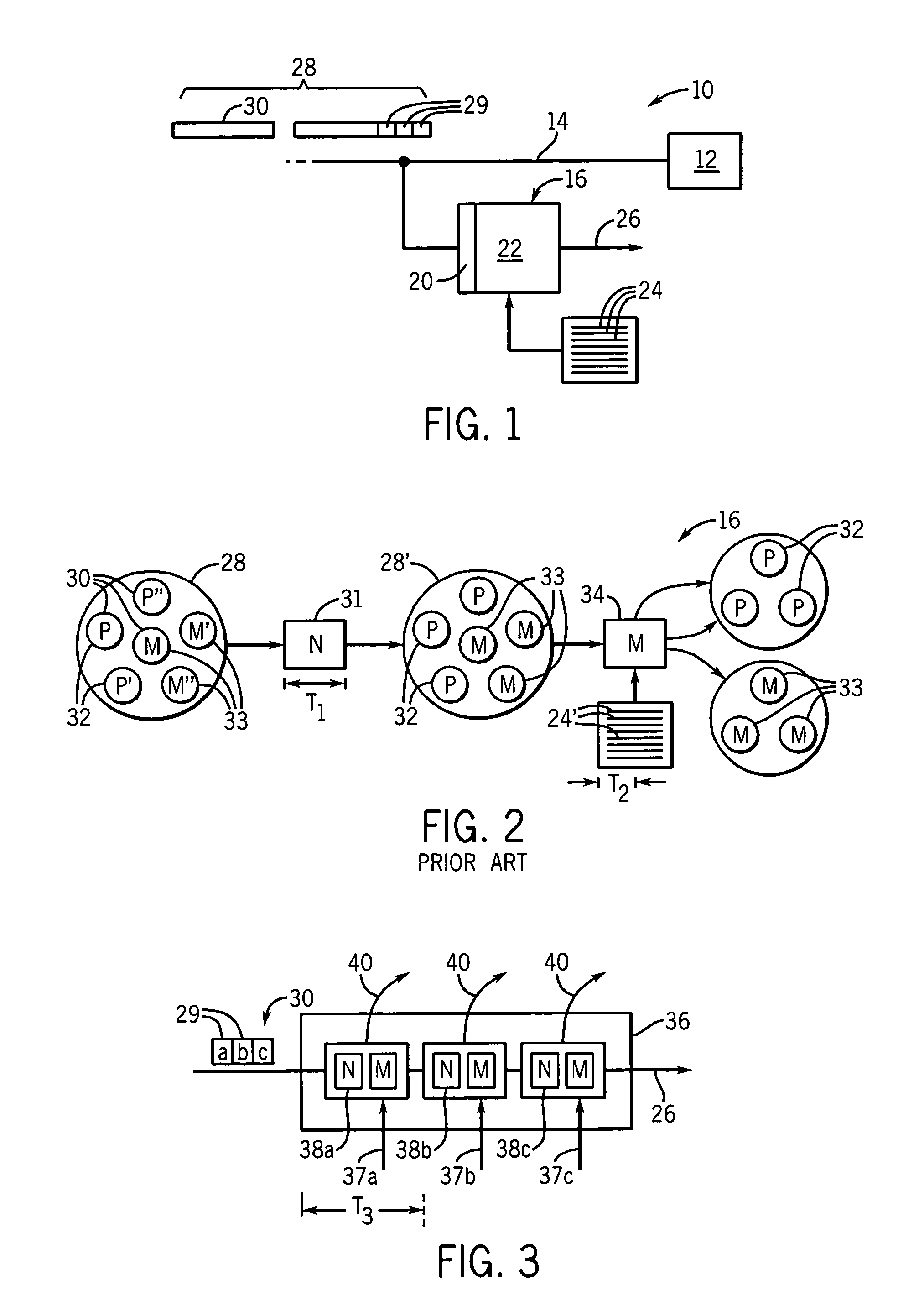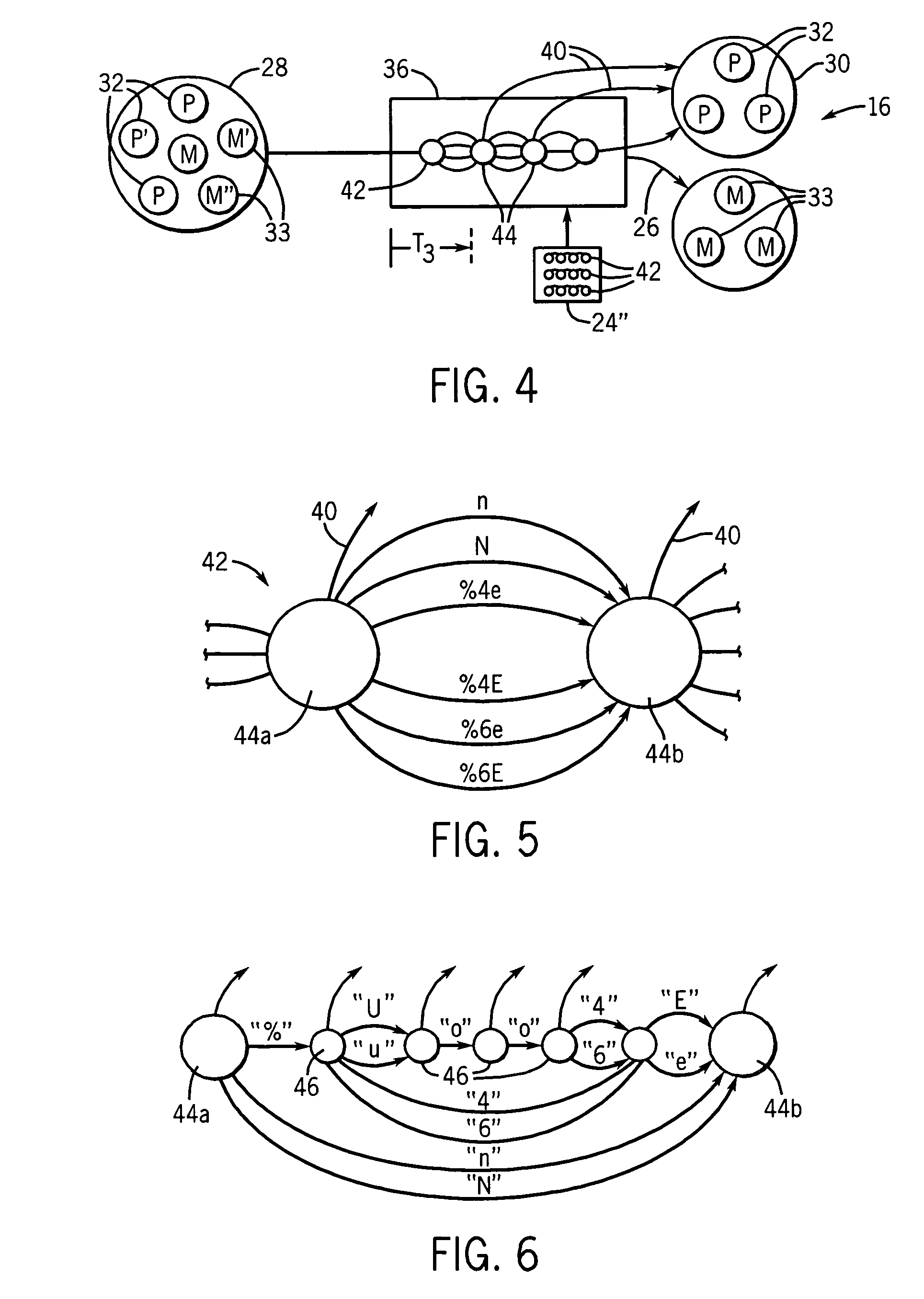Network intrusion detector with combined protocol analyses, normalization and matching
a network intrusion and protocol analysis technology, applied in the field of network intrusion detectors, can solve the problems of significant decrease in the throughput of the nids and difficulty in creating an efficient and correct a priori normalization system
- Summary
- Abstract
- Description
- Claims
- Application Information
AI Technical Summary
Benefits of technology
Problems solved by technology
Method used
Image
Examples
Embodiment Construction
[0034]Referring now to FIG. 1, computer system 10 may include one or more computers 12 attached to a network 14 on which network data 28 comprised of strings 30 of elements 29 (typically bytes) may be received or transmitted. A network intrusion detection system 16 may include a connection to the network 14 to receive and monitor network data 28 for malware strings.
[0035]A typical NIDS 16 will include a network protocol pre-processor 20, for example, a TCP / IP stack which orders and assembles packetized data (not shown) according to a particular network protocol into logical strings 30 and a signature detection system 22 that compares the strings 30 to a list of malware signatures 24. When a string 30 matches one signature of the set of stored malware signatures 24, an alarm signal 26 is generated. The alarm signal may be used to provide for active responses, including updating of firewalls, signatures, and / or termination of ongoing network sessions related to the malware.
[0036]Refer...
PUM
 Login to View More
Login to View More Abstract
Description
Claims
Application Information
 Login to View More
Login to View More - R&D
- Intellectual Property
- Life Sciences
- Materials
- Tech Scout
- Unparalleled Data Quality
- Higher Quality Content
- 60% Fewer Hallucinations
Browse by: Latest US Patents, China's latest patents, Technical Efficacy Thesaurus, Application Domain, Technology Topic, Popular Technical Reports.
© 2025 PatSnap. All rights reserved.Legal|Privacy policy|Modern Slavery Act Transparency Statement|Sitemap|About US| Contact US: help@patsnap.com



